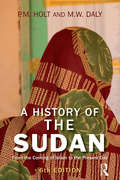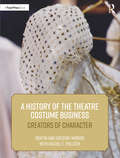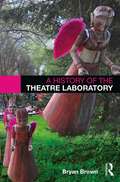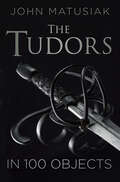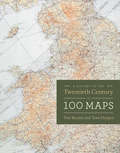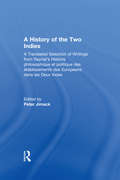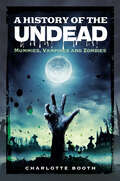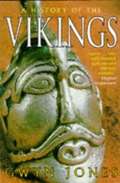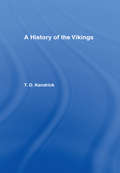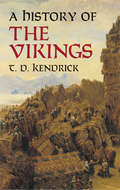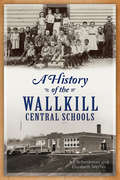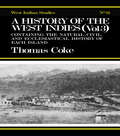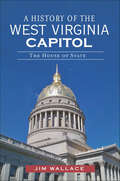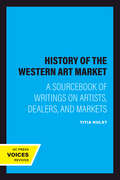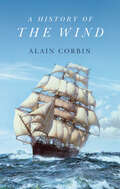- Table View
- List View
A History of the Sudan: From the Coming of Islam to the Present Day
by M. W. Daly P. M. HoltA History of the Sudan by Martin Daly and PM Holt, sixth edition, has been fully revised and updated and covers the most recent developments that have occurred in Sudan over the last nine years, including the crisis in Darfur. The most notable developments that this text covers includes the decades-long civil war in the South (with the signing of the Comprehensive Peace Agreement in January 2005); the emergence of the Sudan as an oil-producer and exporter, and its resulting higher profile in global economic affairs, notably as a partner of China; the emergence of al-Qaeda, the relations of Sudanese authorities with Osama bin Laden (whose headquarters were in the Sudan in the 1990s), and the Sudanese government's complicated relations with the West. This text is key introductory reading for any student of North Africa.
A History of the Theatre Costume Business: Creators of Character
by Triffin I. Morris Gregory DL MorrisA History of the Theatre Costume Business is the first-ever comprehensive book on the subject, as related by award-winning actors and designers, and first hand by the drapers, tailors, and craftspeople who make the clothes that dazzle on stage. Readers will learn why stage clothes are made today, by whom, and how. They will also learn how today’s shops and ateliers arose from the shops and makers who founded the business. This never-before-told story shows that there is as much drama behind the scenes as there is in the performance: famous actors relate their intimate experiences in the fitting room, the glories of gorgeous costumes, and the mortification when things go wrong, while the costume makers explain how famous shows were created with toil, tears, and sweat, and sometimes even a little blood. This is history told by the people who were present at the creation – some of whom are no longer around to tell their own story. Based on original research and first-hand reporting, A History of the Theatre Costume Business is written for theatre professionals: actors, directors, producers, costume makers, and designers. It is also an excellent resource for all theatregoers who have marveled at the gorgeous dresses and fanciful costumes that create the magic on stage, as well as for the next generation of drapers and designers.
A History of the Theatre Costume Business: Creators of Character
by Triffin I. Morris Gregory DL Morris Rachel E. PollockA History of the Theatre Costume Business is the first-ever comprehensive book on the subject, as related by award-winning actors and designers, and first hand by the drapers, tailors, and craftspeople who make the clothes that dazzle on stage.Readers will learn why stage clothes are made today, by whom, and how. They will also learn how today’s shops and ateliers arose from the shops and makers who founded the business. This never-before-told story shows that there is as much drama behind the scenes as there is in the performance: famous actors relate their intimate experiences in the fitting room, the glories of gorgeous costumes, and the mortification when things go wrong, while the costume makers explain how famous shows were created with toil, tears, and sweat, and sometimes even a little blood. This is history told by the people who were present at the creation – some of whom are no longer around to tell their own story. Based on original research and first-hand reporting, A History of the Theatre Costume Business is written for theatre professionals: actors, directors, producers, costume makers, and designers. It is also an excellent resource for all theatregoers who have marveled at the gorgeous dresses and fanciful costumes that create the magic on stage, as well as for the next generation of drapers and designers.
A History of the Theatre Laboratory
by Bryan BrownThe term ‘theatre laboratory’ has entered the regular lexicon of theatre artists, producers, scholars and critics alike, yet use of the term is far from unified, often operating as an catch-all for a web of intertwining practices, territories, pedagogies and ideologies. Russian theatre, however, has seen a clear emergence of laboratory practice that can be divided into two distinct organisational structures: the studio and the masterskaya (artisanal guild). By assessing these structures, Bryan Brown offers two archetypes of group organisation that can be applied across the arts and sciences, and reveals a complex history of the laboratory’s characteristics and functions that support the term’s use in theatre. This book’s discursive, historical approach has been informed substantially by contemporary practice, through interviews with and examinations of practitioners including Slava Polunin, Anatoli Vassiliev, Sergei Zhenovach and Dmitry Krymov.
A History of the Tudors in 100 Objects
by John MatusiakThis seminal period of British history is a far-off world in which poverty, violence and superstition went hand-in-hand with opulence, religious virtue and a thriving cultural landscape, at once familiar and alien to the modern reader. John Matusiak sets out to shed new light on the lives and times of the Tudors by exploring the objects they left behind. Among them, a silver-gilt board badge discarded at Bosworth Field when Henry VII won the English crown; a signet ring that may have belonged to Shakespeare; the infamous Halifax gibbet, on which some 100 people were executed; scientific advancements such as a prosthetic arm and the first flushing toilet; and curiosities including a ladies’ sun mask, ‘Prince Arthur’s hutch’ and the Danny jewel, which was believed to be made from the horn of a unicorn. The whole vivid panorama of Tudor life is laid bare in this thought-provoking and frequently myth-shattering narrative, which is firmly founded upon contemporary accounts and the most up-to-date results of modern scholarship."Everything you wanted to know about the Merrie England of the Tudors and some things you probably did not. If the Tudors seem far removed, they are also curiously modern. They had spectacles and metal prosthetic arms, while a “fuming pot” was but a prototype Air Wick. Matusiak’s mini essays accompanying the photographs are perfectly sculpted and the book is beautiful to hold." - Charlotte Heathcote, The Sunday Express
A History of the Twentieth Century in 100 Maps
by Tom Harper Tim BryarsThe twentieth century was a golden age of mapmaking, an era of cartographic boom. Maps proliferated and permeated almost every aspect of daily life, not only chronicling geography and history but also charting and conveying myriad political and social agendas. Here Tim Bryars and Tom Harper select one hundred maps from the millions printed, drawn, or otherwise constructed during the twentieth century and recount through them a narrative of the century’s key events and developments. As Bryars and Harper reveal, maps make ideal narrators, and the maps in this book tell the story of the 1900s—which saw two world wars, the Great Depression, the Swinging Sixties, the Cold War, feminism, leisure, and the Internet. Several of the maps have already gained recognition for their historical significance—for example, Harry Beck’s iconic London Underground map—but the majority of maps on these pages have rarely, if ever, been seen in print since they first appeared. There are maps that were printed on handkerchiefs and on the endpapers of books; maps that were used in advertising or propaganda; maps that were strictly official and those that were entirely commercial; maps that were printed by the thousand, and highly specialist maps issued in editions of just a few dozen; maps that were envisaged as permanent keepsakes of major events, and maps that were relevant for a matter of hours or days. As much a pleasure to view as it is to read, A History of the Twentieth Century in 100 Maps celebrates the visual variety of twentieth century maps and the hilarious, shocking, or poignant narratives of the individuals and institutions caught up in their production and use.
A History of the Two Indies: A Translated Selection of Writings from Raynal's Histoire philosophique et politique des établissements des Européens dans les Deux Indes
by Peter JimackFirst published in 1770 and running to over one million words, Raynal’s Histoire philosophique et politique des établissements des Européens dans les Deux Indes was an immediate bestseller that was to go through numerous editions in various languages. Taking a radical anti-imperialistic stance, the nineteen books that comprised the original work covered the history of European colonisation of India, the East Indies, China, parts of Africa, and the Americas. Much of the success, and subsequent reputation, of the Histoire was based on its attacks on tyranny, slavery and colonial exploitation, and it quickly became one of the basic texts for the humanitarian movement. In this current edition, Peter Jimack has chosen a representative selection of passages from all books of the Histoire that shows the breadth and scope of the work. His translation into English of these from the standard enlarged 1780 edition captures all the vitality and passion of Raynal and his co-authors (including Diderot) and highlights just why this book had such a profound and enduring impact. A helpful and detailed Introduction sets the work in its historical and philosophical context. As well as making available one of the key radical works of the later eighteenth century, this edition reveals much about the impact of foreign countries and cultures on Enlightenment thinking. Dealing with the activities of all the main European colonial powers, France, Spain, Britain, The Netherlands and Portugal, it reveals much about their trading and imperial ventures across the East Indies and Americas, and the effect this was to have on both sides of the Atlantic. As such this edition will prove invaluable for all students and scholars interested in eighteenth-century colonialism, political theory, the history of foreign trade, slavery or Enlightenment philosophy.
A History of the Undead: Mummies, Vampires and Zombies
by Charlotte BoothA history of Western culture’s fascination with undead creatures in film and television.Are you a fan of the undead? Watch lots of mummy, zombie and vampire movies and TV shows? Have you ever wondered if they could be “real?”This book, A History of the Undead, unravels the truth behind these popular reanimated corpses.Starting with the common representations in Western media through the decades, we go back in time to find the origins of the myths. Using a combination of folklore, religion and archaeological studies we find out the reality behind the walking dead. You may be surprised at what you find . . .
A History of the Undead: Mummies, Vampires and Zombies
by Charlotte BoothA history of Western culture’s fascination with undead creatures in film and television.Are you a fan of the undead? Watch lots of mummy, zombie and vampire movies and TV shows? Have you ever wondered if they could be “real?”This book, A History of the Undead, unravels the truth behind these popular reanimated corpses.Starting with the common representations in Western media through the decades, we go back in time to find the origins of the myths. Using a combination of folklore, religion and archaeological studies we find out the reality behind the walking dead. You may be surprised at what you find . . .
A History of the United States
by Daniel J. Boorstin Brooks Mather Kelley Ruth Frankel BoorstinAmerican history is the story of a magic transformation. How did people from everywhere join the American family? How did men and women from a tired Old World, where people thought they knew what to expect, become wide-eyed explorers of a New World? What does it mean to be an American? To answer that question we must shake hands with our earlier selves and try to become acquainted. We must discover what puzzled and interested and troubled earlier Americans. These are some of the questions we try to answer in this book.
A History of the United States
by Daniel J. Boorstin Brooks Mather Kelley"A History of the United States'" well-told story and expanded program is designed to address students changing curriculum and classroom needs. The authors tells the story of American history in an engaging style that reaches today's students.
A History of the United States
by Daniel J. Boorstin Brooks Mather Kelley Ruth Frankel BoorstinA text on the history of the United States through 1998.
A History of the United States in Five Crashes: Stock Market Meltdowns That Defined a Nation
by Scott NationsIn this absorbing, smart, and accessible blend of economic and cultural history, Scott Nations, a longtime trader, financial engineer, and CNBC contributor, takes us on a journey through the five significant stock market crashes in the past century to reveal how they defined the United States todayThe Panic of 1907: When the Knickerbocker Trust Company failed, after a brazen attempt to manipulate the stock market led to a disastrous run on the banks, the Dow lost nearly half its value in weeks. Only billionaire J.P. Morgan was able to save the stock market.Black Tuesday (1929): As the newly created Federal Reserve System repeatedly adjusted interest rates in all the wrong ways, investment trusts, the darlings of that decade, became the catalyst that caused the bubble to burst, and the Dow fell dramatically, leading swiftly to the Great Depression.Black Monday (1987): When "portfolio insurance," a new tool meant to protect investments, instead led to increased losses, and corporate raiders drove stock prices above their real values, the Dow dropped an astonishing 22.6 percent in one day.The Great Recession (2008): As homeowners began defaulting on mortgages, investment portfolios that contained them collapsed, bringing the nation's largest banks, much of the economy, and the stock market down with them.The Flash Crash (2010): When one investment manager, using a runaway computer algorithm that was dangerously unstable and poorly understood, reacted to the economic turmoil in Greece, the stock market took an unprecedentedly sudden plunge, with the Dow shedding 998.5 points (roughly a trillion dollars in valuation) in just minutes.The stories behind the great crashes are filled with drama, human foibles, and heroic rescues. Taken together they tell the larger story of a nation reaching enormous heights of financial power while experiencing precipitous dips that alter and reset a market where millions of Americans invest their savings, and on which they depend for their futures. Scott Nations vividly shows how each of these major crashes played a role in America's political and cultural fabric, each providing painful lessons that have strengthened us and helped us to build the nation we know today.A History of the United States in Five Crashes clearly and compellingly illustrates the connections between these major financial collapses and examines the solid, clear-cut lessons they offer for preventing the next one.
A History of the United States, Volume 2
by David TrowbridgeA History of the American People Vol. 2 by Trowbridge is an engaging, accessible narrative that makes US history (after 1865) come alive and bridges the gap between academia and your students. This text does more than cover the basic timeline of events students need to be familiar with, it provides opportunities to read about history from a variety of perspectives and appeals to students of diverse backgrounds and abilities. Trowbridge made a concerted effort to reach students where they live, regardless of whether they have already discovered a love for history or they are about to in your class.
A History of the University in Europe
This is the final volume in a four-part series covering the development of the university in Europe (east and west) from its origins to the present day, focusing on a number of major themes viewed from a European perspective. The originality of the series lies in its comparative, interdisciplinary, collaborative and transnational nature. It deals also with the content of what was taught at the universities, but its main purpose is an appreciation of the role and structures of the universities as seen against a backdrop of changing conditions, ideas and values. This volume deals with the reconstruction and epoch-making expansion of higher education after 1945, which led to the triumph of modern science. It traces the development of the relationship between universities and national states, teachers and students, their ambitions and political activities. Special attention is paid to fundamental changes in the content of teaching at the universities.
A History of the Vietnamese
by K. W. TaylorThe history of Vietnam prior to the nineteenth century is rarely examined in any detail. In this groundbreaking work, K. W. Taylor takes up this challenge, addressing a wide array of topics from the earliest times to the present day - including language, literature, religion, and warfare - and themes - including Sino-Vietnamese relations, the interactions of the peoples of different regions within the country, and the various forms of government adopted by the Vietnamese throughout their history. A History of the Vietnamese is based on primary source materials, combining a comprehensive narrative with an analysis which endeavours to see the Vietnamese past through the eyes of those who lived it. Taylor questions long-standing stereotypes and clichés about Vietnam, drawing attention to sharp discontinuities in the Vietnamese past. Fluently written and accessible to all readers, this highly original contribution to the study of Southeast Asia is a landmark text for all students and scholars of Vietnam.
A History of the Vikings
by Gwyn JonesThe book recounts the Vikings' exploits in war, trade, and colonization: the assault on Western Christendom. Gwyn Jones has photographs, maps, and drawings to compliment the portrait of Viking civilization.
A History of the Vikings
by Sir Thomas KendrickFirst published in 1968. The barbarians of the distant and little-known north, of Scandinavia, that is, and of Denmark, became notorious in the ninth and tenth centuries as pests who plagued the outer fringes of the civilized This volume is an English narrative of the Vikings and their activities in the west, far north as well as east and south-east also.
A History of the Vikings
by T. D. KendrickThis enthralling, well-documented, and vivid account chronicles the activities of those bold sea raiders of the North who terrorized Europe from the eighth to the eleventh centuries. A dramatic narrative takes readers from the White Sea in the Arctic to Africa’s Moroccan coast, from Viking operations in Russia, England, and Ireland, to daring exploits in Iceland, Greenland, and America.Written by a former curator of the British Museum’s Department of Medieval Antiquities, the volume is one of the first complete accounts of the Nordic raiders. Amply illustrated and written with freshness and vigor, this perennially appealing story of conquest will be valuable to scholars and students of Nordic history.“A titanic subject and in [the author’s] hands, it becomes absorbing drama.” — Bookman.“Undoubtedly the best and most comprehensive study … it would be hard to name a work in any tongue which could rival its treatment of the subject.” — Times [London] Literary Supplement.
A History of the Wallkill Central Schools
by A. J. Schenkman Elizabeth WerlauWhen the Borden family arrived in the nineteenth century, educational opportunities in Ulster County were limited; classes rarely extended beyond the eighth grade. This changed when the philanthropic Bordens established their Borden Condensed Milk Company and gave Wallkill the means to construct one of the area's first high schools. In 1938, Central School District No. 1--incorporating the towns of Shawangunk, Plattekill, Gardiner, Marlborough, Newburgh and Montgomery--was formed after residents voted to consolidate the John G. Borden High School with surrounding one- and two-room schoolhouses. Although those early schoolhouses are now long gone, the proud tradition of education and service carries on in the Leptondale, Clare F. Ostrander and Plattekill Elementary Schools; the John G. Borden Middle School; and the Wallkill Senior High School. Local educators A.J. Schenkman and Elizabeth Werlau explore Wallkill Central School District's seventy-five years of educational excellence.
A History of the West Indies: Containing the Natural, Civil and Ecclesiastical History of Each Island
by Thomas CokeDisappointed with the purely secular tone of the earlier West Indian histories, Thomas Coke concentrated on the history of the missions in the Caribbean. This work was written immediately after the abolition of slavery, but 25 years before emancipation, and based on a wealth of documentation.
A History of the West Virginia Capitol: The House of State (Landmarks)
by Jim WallaceEven though the West Virginia Capitol deviated from the design of legendary architect Cass Gilbert, the iconic building is still considered a masterpiece. The full story of the Capitol is filled with twists and turns, from the fortunate fire that burned its predecessor to the tug of war between Wheeling and Charleston for the designation of state capital. Revisit the to-gild-or-not-to-gild debate that raged around the construction of the Capitol's signature crown, which once was in danger of collapsing on itself or toppling in heavy winds. Join Charleston author Jim Wallace for this captivating account of West Virginia's architectural jewel.
A History of the Western Art Market: A Sourcebook of Writings on Artists, Dealers, and Markets
by Titia HulstThis is the first sourcebook to trace the emergence and evolution of art markets in the Western economy, framing them within the larger narrative of the ascendancy of capitalist markets. Selected writings from across academic disciplines present compelling evidence of art’s inherent commercial dimension and show how artists, dealers, and collectors have interacted over time, from the city-states of Quattrocento Italy to the high-stakes markets of postmillennial New York and Beijing. This approach casts a startling new light on the traditional concerns of art history and aesthetics, revealing much that is provocative, profound, and occasionally even comic. This volume’s unique historical perspective makes it appropriate for use in college courses and postgraduate and professional programs, as well as for professionals working in art-related environments such as museums, galleries, and auction houses.
A History of the Wife
by Marilyn Yalom“A valentine to wives . . . after reading Yalom's history, one thing is clear: marriage is not for the faint-hearted.” —USA TodayHow did marriage, considered a religious duty in medieval Europe, become a venue for personal fulfillment in contemporary America? How did the notion of romantic love, a novelty in the Middle Ages, become a prerequisite for marriage today? And, if the original purpose of marriage was procreation, what exactly is the purpose of marriage for women now?Combining “a scholar's rigor and a storyteller's craft” (San Jose Mercury News), distinguished cultural historian Marilyn Yalom charts the evolution of marriage in the Judeo-Christian world through the centuries and shows how radically our ideas about marriage have changed.For any woman who is, has been, or ever will be married, this intellectually vigorous and gripping historical analysis of marriage sheds new light on an institution most people take for granted, and that may, in fact, be experiencing its most convulsive upheaval since the Reformation.“Scholarly yet delectably readable volume.” —People“Yalom’s sweeping history not only offers a clear overview of the role of the wife over the centuries but also recounts the experiences of specific individuals.” —Los Angeles Times“Packed with rich material.” —The New York Times Book Review“Portrays the gradual but relentless shift from subjugation toward partnership . . . collating what information is available about how women have spent, and felt about, their married lives.” —Chicago Tribune“Yalom’s brilliant deconstruction of the married state for women is at once reassuring and shocking . . . perfectly fascinating.” —Diane Johnson, New York Times–bestselling author of Le Divorce
A History of the Wind
by Alain CorbinEveryone knows the wind&’s touch, its presence, its force. Sometimes it roars and howls, at other times we hear its wistful sighs and feel its soothing caresses. Since antiquity, humans have borne witness to the wind and relied on it to navigate the seas. And yet, despite its presence at the heart of human experience, the wind has evaded scrutiny in our chronicles of the past. In this brilliantly original volume, Alain Corbin sets out to illuminate the wind&’s storied history. He shows how, before the nineteenth century, the noisy emptiness of wind was experienced and described only according to the sensations it provoked. Imagery of the wind featured prominently in literature, from the ancient Greek epics through the Renaissance and romanticism to the modern era, but little was known about where the wind came from and where it went. It was only in the late eighteenth century, with the discovery of the composition of air, that scientists began to understand the nature of wind and its trajectories. From that point on, our understanding of the wind was shaped by meteorology, which mapped the flows of winds and currents around the globe. But while science has enabled us to understand the wind and, in some respects, to harness it, the wind has lost nothing of its mysterious force. It still has the power to destroy, and in the wind&’s ethereal presence we can still feel its connection with creation and death.
